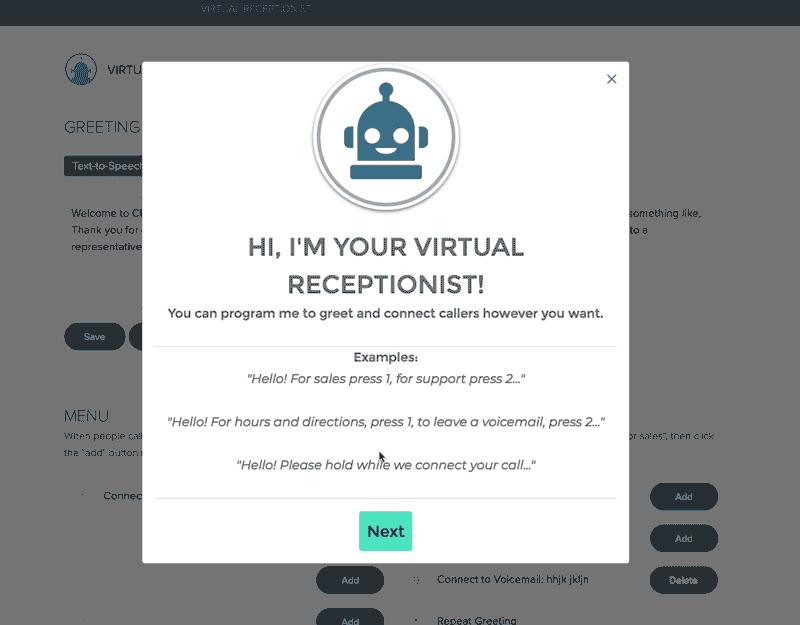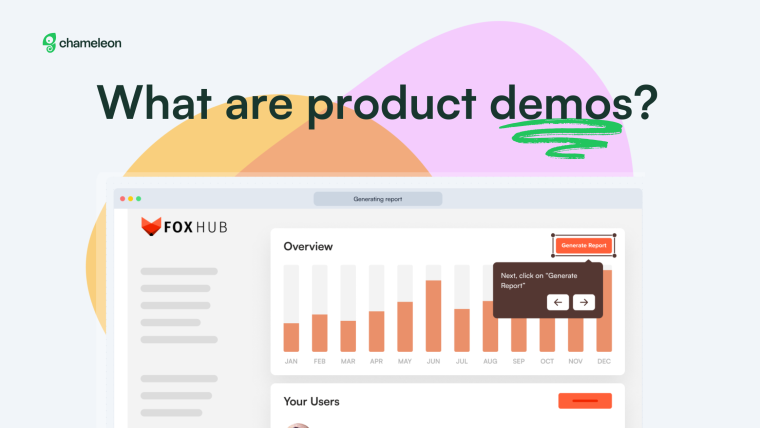In SaaS business, lack of growth equals death. Competition is tough in every sector, with a rapidly growing number of software companies taking off, expanding, and continuing market domination year after year.
In a world where every event and user property is trackable, today's best SaaS marketers are using modern product marketing tools to gauge the impact of campaigns and experiments across every stage of the user journey.
With revenue as a main KPI and data as the evidence behind all decisions, SaaS marketing strategies go beyond basic spray-and-pray tactics to drive real business results.
Unlike traditional marketing, which focuses on the top of the funnel, growth marketing takes a data-driven approach across the entire product funnel to formulate insights into a strategy that drives acquisition and bolsters customer lifetime value.
It’s important to experiment with new marketing tactics and develop your own innovative SaaS growth strategy.
For example, Vovox added friction in the product walkthrough to slow users down and draw attention to a frequently overlooked feature, resulting in more than a 50% reduction in churn, as well as a 20% increase in user activation.
Let’s dive deeper into each of the 12 examples of SaaS growth strategies that resulted in success. We'll share insights that you can easily apply to your product.
SaaS companies need to innovate in their growth marketing strategies
Startups must completely change the rules of traditional channels or innovate outside of those growth channels. They have to dig deep creatively, and relentlessly test new ideas. If they don’t figure it out quickly, they will go out of business. - Sean Ellis
Unlike traditional marketing, which focuses on the top of the funnel, growth marketing takes a data-driven approach across the entire product funnel to formulate insights into a strategy that drives acquisition and bolsters customer lifetime value. The comparison is often shown like this:

Source: Trueco
How are those at the forefront of achieving growth with a B2B SaaS marketing strategy? Let's find out.
SaaS Growth Marketing Strategies That Worked For Real Products
In this list, we'll walk you through examples and data from 12 successful strategies, sharing insights that you can easily apply to your growth marketing strategies.
1. Voxox Tweaking Product Flows To Increase Customer Activation

Taking a case study from our book, one of our customers Voxox built CloudPhone, a business phone product aimed at SMBs. to make telecommunications easier and less expensive.
The challenge they faced was user activation and churn. Customers expressed interest, but only a fraction of them was signing up. Voxox knew they had to dissect the customer journey to identify where it was people were dropping off.
Through a combination of A/B testing, surveying users, and measuring the status quo, they discovered that their users were missing out on a key time-saving feature that CloudPhone offered. The customer onboarding process had been automated too heavily, failing to draw attention to the feature.
Using Chameleon, Voxox tweaked its onboarding flow. By adding friction (albeit counterintuitively) and slowing down the product walkthrough, they were able to draw user attention to the CloudPhone feature. Their results were more than a 50% reduction in churn, as well as a 20% increase in user activation. These stronger metrics would help Voxox receive a higher SaaS valuation if they ever came to sell their business.
2. Slack Freemium Becomes Irreplaceable

Although Slack wasn’t the original apple of its creators’ eyes, the messaging tool eventually turned heads when the team realized the benefits the platform held for corporate communications.
At the time of its launch, Slack was moving in on an emerging market. The team had validated the product through Beta testing, they just had to come up with a way to make it stand out. Enter their Freemium model. It wasn’t a new concept, but Slack did it differently, giving them the market advantage.
Instead of releasing a half-baked tool, they gave users a free product that they knew no one could do without once they started using. Add in customer support levels that match the premium subscription and there was no reason for anyone to leave the product they love -- only upgrade it. There is also the potential for virality when a large number of people love a free product: users spoke about the communication tool far and wide - in person, on social media, and in oft-cited articles about why their company switched to Slack.
Slack’s SaaS growth marketing strategy saw churn and CAC decrease, and with a nearly unrivaled freemium conversion rate of 30%, customer lifetime value increased. Part of the reason why it was so successful is the kinds of limitations Slack imposes for free users; not time-based, but limitations that kick in when enough messages have been sent that Slack has become vital.
3. Kissmetrics Email Marketing

The Kissmetrics platform provides users with insights into how their customers behave online, and the tools to increase engagement, conversions, and retention.
However, it is no easy feat competing against the free Google Analytics, a) with a paid product and b) in an under-educated market (2008!).
Using their own analytics tool, Kissmetrics segmented and targeted different audience personas they had identified as potential customers. Taking content resources from the vast Kissmetrics Academy, they set up campaigns aimed toward a target audience of those reading similar articles on the web.
The campaigns dangled a content gift and a free trial of their tool in exchange for an email address. Each time they gained a subscriber, they handed over authoritative guides full of valuable insights written by industry professionals. Their goal was to promote product-growth by making a name for themselves and becoming the first option for marketers considering investing in a paid tool.
According to Padicode, Kissmetrics saw a 300% increase in email subscriptions over the duration of the campaign, demonstrating the effectiveness of their platform and email marketing efforts.
4. HubSpot’s Free Website Grader Tool

HubSpot wanted to change how businesses market to people, and to do this it needed more than to provide software; it also needed to educate the market and prepare users to make a mental shift towards inbound marketing.
One of the first projects they launched out of the HubSpot Labs in 2007 was the website grader. Co-founder, Dharmesh Shah, has mentioned online just how important the tool has been in supporting the platform’s growth over the years.
Because the tool was a free resource, it proved useful for both HubSpot's customers as well as prospects. It gives a user a score out of 100 for their website and then offers recommendations on what to do to improve it. It also ranks organically for sought-after terms like 'website grader', bringing in a constant stream of qualified leads.
Not only is this free tool useful for SMBs, but it also helped to generate millions of top-of-funnel leads for the platform. Customer Acquisition Cost (CAC) was lowered as the website grader required no selling or training, reducing the demands on HubSpot’s sales team.
5. Intercom’s Real Approach To Content and Customers

Intercom is a customer messaging platform, providing a suite of apps for businesses to manage their sales, marketing, and support communication.
At the forefront of their market when the technology emerged, Intercom has had to find ways to keep competitive in a shifting landscape. Using a Jobs-to-be-Done framework, they implemented a fresh approach to solving customer problems through their website content.
Usually, a SaaS company would approach products and marketing by assessing their target personas. Intercom, however, considered what jobs their product would be fulfilling, what questions it would be answering, and what problems it would be solving.
Intercom’s content strategy for both products and their blog is governed by story-telling, sharing insights, and conducting research. They use the answers to create better products and effective messaging.
The approach has been successful for the company. Their job-focused landing pages see a conversion rate of about 5%, helping to offset their CAC, and their top-of-funnel traffic has more than tripled. Customer LTV is also high due to the problem-solving nature of the company.
6. Xero Relating To The Market Through Partner Programs

Xero revolutionized the accounting industry with cloud-based accounting software for SMBs. From 2006 to date, the platform has acquired 1.82 million subscribers and seen approximately 30% year-on-year growth.
From the outset, the company knew it had to market to accounting firms and bookkeepers and have them buy into the product. However, there are fewer of these than there are SMBs at large who require the software service. As a result, Xero had to come up with a SaaS growth strategy to help them collect revenue elsewhere.
Rather than expanding to enterprise-level, they wanted to keep the focus on adding value to their existing market and the platform evolved into a small business solution.
Part of the solution included devising an extensive partner program. Through it, Xero helps partners to secure clients, offering events and awards to provide them with more value.
Past investor briefings have indicated the benefits of this approach, attributing more than 90% of paid subscriptions in their most developed market to their accounting partners. According to the 2019 financial reports, the total lifetime value (LTV) of its subscribers was $4.4 billion.
7. Baremetrics Retargeting Ads

The Baremetrics analytics tool provides SaaS and subscription businesses with insights they can use to drive their business forward. One of their core selling propositions is their integration and partnership with Stripe, providing analytics to users.
To edge potential customers Stripe users down the sales funnel, the company employed retargeting tactics to resurface their product around the internet after receiving a site visit. Retargeting is more effective when a product has an immediate value proposition for the user. In this case, there was value in the fact that Stripe offers very little in way of metrics, so many of its users have a need for the Baremetrics tool.
Baremetrics made sure that the retargeted ads were simple, and the proposition made obvious. They targeted banner ads as well as ads in the Facebook sidebar, with the best results coming from the latter. CAC was just $6 for a customer worth $650.
8. TransferWise Monitoring NPS Score
It takes a degree of trust to allow someone you don’t know to move your money around the world. Initially, although TransferWise had a great workaround for doing this at the cost of next to nothing, the online money transfer service was finding it difficult to get people to use their services. Using a bank seemed much safer than clicking on an internet advert that promises to move your savings.
After testing various marketing channels, the company concluded that their focus needed to be on delighting their customers at every touchpoint in order to achieve the SaaS growth they were looking for.
Now, TransferWise closely monitors their Net Promoter Score (NPS), which at last count was sitting at 86%. Turning their customers into advocates has landed them with a scalable growth channel. Although their market is primarily B2C, the company plans to use this growth success to scale further into the B2B market.
9. Hootsuite Making An Impression With Successful Social Sharing
Hootsuite is one of the social media management platforms that businesses can use to track their various accounts. Social lies at the heart of what they do, so it was apt when they took a well-known, trending TV show, and recreated it to drum up brand awareness.
Just before the season premiere of Game of Thrones, the company released its own themed video which imitated the hit series opening sequence. In it, they emulated the scenes, depicting their customer's social battles to see the rise of their respective profiles.
As the video was made in-house, it cost very little to produce and social media did a lot of the promotional work. To date, the video has had approximately 1.3 million views, which when combined with the effort to produce it, results in a low CAC.
10. Zendesk Alternative Using SEO For A Lighter Approach To Being Unwanted

As a customer service software company, Zendesk is constantly required to think on its feet. Its team is also very focused on SEO, which turned out to be a winner for the company, even if for odd reasons.
In 2013, Zendesk noticed a trend in people searching the terms ‘Zendesk alternative’. The team knew they needed to take action, as it meant that they were not quite hitting the mark for customers somewhere along the line.
Taking a genius, lighthearted approach to the situation, they decided to claim some of the organic search traffic the term was getting. They created a fake band named Zendesk Alternative and listed it on Bandcamp, recorded a themed ‘Making the Band’ video, bought the domain name, applied keyword-optimized content, and set up social media accounts.
The result was the number 1 spot on Google for Zendesk Alternative and a 95% higher conversion rate compared to the original site, beating down their competitors in a show of original thought. The stint also gained the company some good brand recognition, as well as increased its customer LTV.
Now that's how you do content marketing.
11. GrooveHQ Experimenting With Pricing Models To Increase Free Trialing

GrooveHQ is an online ticketing system that helps businesses to manage customer support. After launching, initially, they weren’t seeing the signup or revenue results they were looking for.
They decided to tackle pricing models, as they weren’t quite sure where they should be sitting on the spectrum just yet.
After testing various models out, they soon discovered that a simple, all-in monthly pricing structure gave them the best conversion rates. 358% more people signed up for free trials when compared to the first model. GrooveHQ also saw an increased revenue of 25%, improving its expansion revenue.
12. SmarterQueue’s Integrated Approach
Social media management tool SmarterQueue assists businesses with curating, scheduling, and analytics functionality for their accounts.
Perhaps one of the smarter insights to take from this article is the fact that no one strategy will work for every company. Similarly, it’s often a case of pooling marketing strategies to get adequate traction in business.
In the case of SmarterQueue, they initially experimented with customer waiting lists and word-of-mouth referrals, expanding to sampling monetization models, and A/B testing to increase revenue.
Over the course of its operations which began in 2015, the business has improved its MRR, taking it from $250 to $40k plus six months later.
Developing Your Own SaaS Marketing Strategies
The SaaS industry is ever-evolving. Growth marketers need to change the rules of traditional marketing to find innovative ways of engaging and retaining customers. Sustained growth can only be achieved when customers turn into brand champions and are prepared to stick around.
Based on the examples above, we hope to have inspired you to experiment with new marketing tactics and gain better insights into how to achieve SaaS growth for your business. 🚀

Create in-app experiences that retain and convert users
Chameleon makes it easy for product marketers to create tooltips, modals, and product tours without code




